What’s the Buzz? Discovering Pollinators in DSM
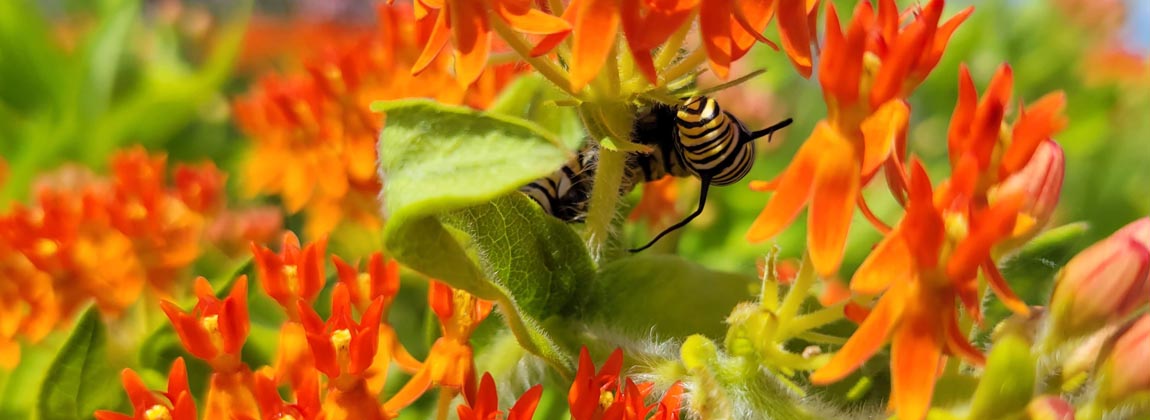
This is the first post in a two-part environmental series from Polk County Conservation on both pollination and landscaping.
Iowa’s rolling prairies and biodiverse ecosystems have long relied on the tireless work of pollinators. A majority of the state of Iowa was once blanketed with vast prairie ecosystems dotted with vibrant flowers and towering grasses. These native plants still grow in Iowa today, just in smaller patches around the state. Pollinators like butterflies, bees and hummingbirds are fluttering with activity this time of year and we can observe them in our parks, greenspaces and even our backyards throughout Greater Des Moines (DSM).
Understanding Pollinators and Their Importance
Pollinators are animals that move pollen from one flower to another, facilitating the reproductive process of plants. We call this interaction pollination. While bees are probably the most well-known pollinator species, other insects like butterflies, moths, beetles and flies as well as many bird species play crucial roles in pollination in the region. All these species are responsible for pollinating over 75% of our flowering plants and about 35% of our food crops. Without pollinators, our access to fresh fruits, vegetables and nuts would be drastically reduced. One out of every three bites of your food make it to your plate because of the hard work of a pollinator, so be sure to thank a pollinator next time you sit down for a meal!
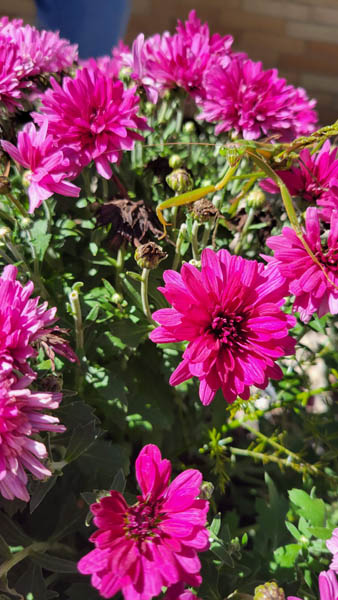
Common Pollinator Species in Greater Des Moines
Des Moines and its surrounding communities are home to a diverse population of pollinator species including 300 – 400 different species of bee, 110 butterfly species, 2,000 moth species, the ruby-throated hummingbird and thousands of various fly and beetle species. Common species that are easily identifiable in and around the region include the iconic monarch butterfly (Danaus plexippus) often seen flying near blooming flowers and milkweed plants. Honeybees (Apis mellifera), swallowtail butterflies (Papilionidae), Luna moths (Actias luna) and bumblebees (Bombus) also can be seen moving about near flowering plants, small waterways and tall grasses. Bird species like the Ruby-throated hummingbird (Archilochus colubris) can often be seen visiting pollinator-friendly places in DSM, adding another layer to the dynamic pollination network here.
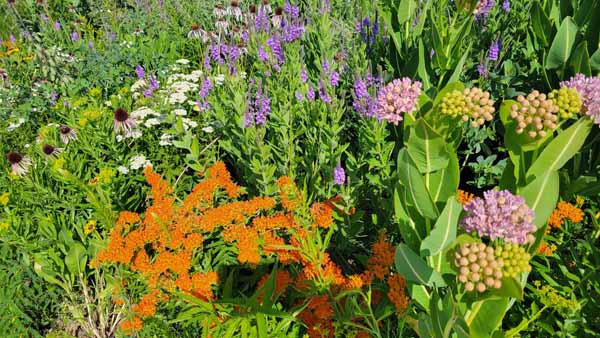
A Place for Pollinators
Pollinators require several key elements in their habitat to survive in the wild. Pollinator gardens are areas popping up around DSM that are specifically designed to attract and support pollinators by providing a food resource (nectar), pollen and cover to aid in their survival. These gardens offer numerous benefits:
Biodiversity Support: Pollinator gardens help maintain and enhance local biodiversity by providing habitats for pollinators and other wildlife.
Improved Pollination: These gardens can greatly improve the pollination of nearby plants by attracting pollinators, including those in vegetable gardens and nearby fruit trees.
Educational Opportunities: These gardens can serve as a “living classroom” where children and adults alike can learn about ecology and conservation through observation and interaction with the plants and animals in the garden.
Aesthetic and Recreational Value: Pollinator gardens, no matter the size, can enhance a space’s beauty with vibrant flowers and different textures. They can also offer serene spots for relaxation and recreation.
If you’re on the hunt for a pollinator, the best places to look are in large, open, natural areas with access to flowering plants, water and some sort of shelter. Depending on the time of day, your species will vary. For example, some pollinators like the Luna moth are nocturnal and can only be seen after dusk, whereas the monarch butterfly prefers a clear sunny day from dawn until dusk. If it is raining outside, most pollinators will shelter themselves in grasses and trees for protection until the sun comes back out.
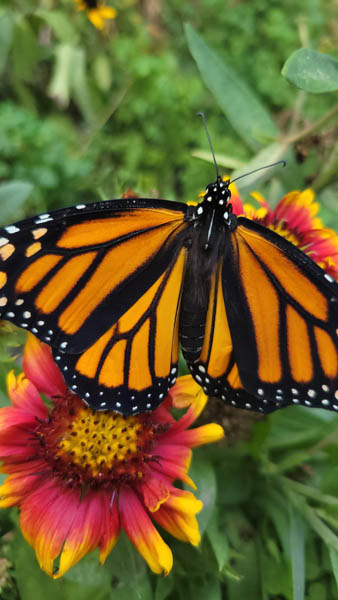
Landscaping for Pollinators
If you’re looking to attract pollinators to your home or community gathering place there are several native plants that look great and provide everything our pollinator species need to thrive. Native plants like common milkweed, pale purple coneflower, black-eyed Susan, wild bergamot, mountain mint, blazing star and spiderwort add beauty and important natural resources to your landscaping.
Often, the biggest obstacle to adding these plants is access to seeds or plant plugs. Listed below are a few local garden centers that have native plants in their inventory. If you’re looking for more native plant species check out Iowa State Extension and Outreach’s Native Plants resource, as well as the following:
Here are a few tips to help you get your own pollinator garden or landscaping project started:
-
Site Selection: Native prairie plants love the sun! Choose part of your space that gets at least 6 hours of direct sunlight during the day. Pollinators are also the most active in sunny areas.
-
Soil Preparation: Be sure that your soil can be well-drained after rain or direct watering. Most native plants do not thrive in saturated soil.
-
Bloom Continuity: Select a variety of plants that bloom at different times throughout the year to support pollinators for as much of the year as possible.
-
Avoid Pesticides: Reduce or eliminate the use of pesticides as much as possible. These chemicals can be harmful to pollinators and other native wildlife.
Tips for maintaining your pollinator garden or landscaping project:
-
Mulching: Apply a layer of mulch around plants to retain moisture, deter weeds and provide shelter for ground-dwelling pollinators.
-
Diverse Planting: Include a mix of plant heights, flower shapes and colors to attract as many different pollinators as possible.
-
Continuous Learning: Stay informed about best practices and new trends in pollinator gardening by attending workshops and educational programs in your community.
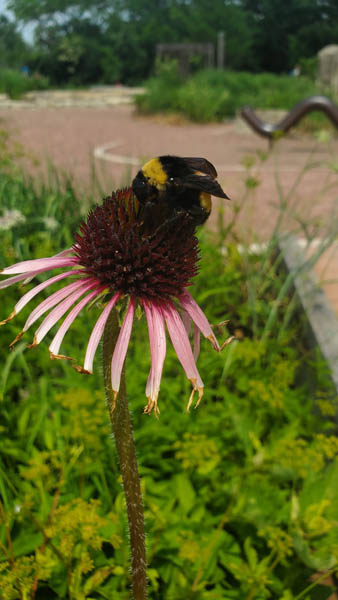
Local Resources and Community Involvement
DSM offers several resources and opportunities for community involvement to support pollinator gardens:
-
Polk County Conservation: Here in the DSM region, Polk County Conservation is striving to improve and restore native ecosystems across the county. Check out our events page for monthly educational programming and our volunteer page to get involved at your local parks!
-
Polk County Conservation has an extensive family of parks that all host numerous pollinator gardens.
-
Check out the Park Packs, too!
-
Iowa State University Extension and Outreach: Provides valuable information on native plants, gardening techniques, and pollinator conservation. They often host workshops and events related to these topics as well. Additionally, Polk County Extension hosts several learning gardens across the county, learn more about them here.
-
Blank Park Zoo: The Blank Park Zoo created a conservation initiative named Plant. Grow. Fly., this program provides the resources you need to create your very own pollinator garden and register it within this program. You can also find a list of native plant species to use for your next landscaping project. Other resources:
-
Greater Des Moines Botanical Garden: This urban oasis features a variety of pollinator-friendly plants and offers educational programs and community events for the public throughout the year.
Visiting or creating a pollinator garden in DSM is a rewarding experience that not only supports local biodiversity but also enhances our urban green spaces. Understanding the needs of pollinators and implementing thoughtful gardening practices where you can, will ultimately make a significant and positive impact on their populations. Whether you have a small balcony, a backyard, or access to a community plot, there are countless ways to contribute to the pollinator movement in the region. And if you don’t have a green thumb, visiting local parks and volunteering in your community gardens is another great way to support these creatures.
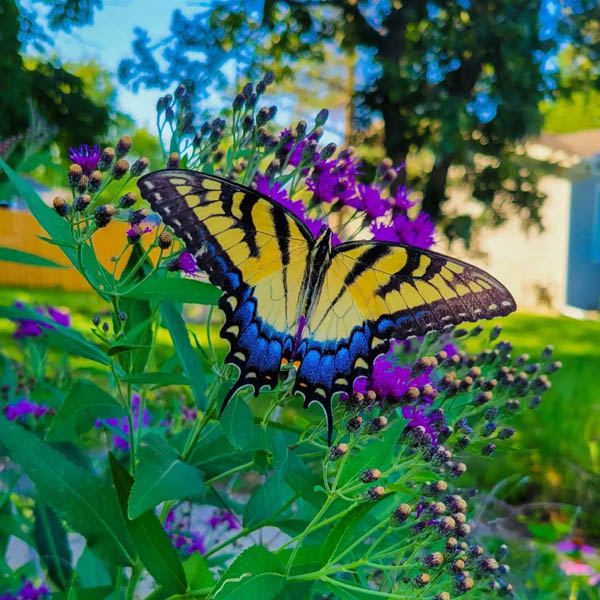
Polk County Conservation is always looking for new ways to involve and inspire our communities to connect with their natural resources. Listed below are a few upcoming events that are located in and around DSM. We hope that you’ll “bee” there!
Whether it’s a morning on the lake or an evening spent exploring Greater Des Moines’ (DSM’s) 800 miles of connected recreational trails, the region has many outdoor options. Don’t miss seeing the High Trestle Bridge, Terra Park or Principal Riverwalk — with attractions like Lauridsen Skatepark or the Robert D. Ray Asian Garden — all along walkways throughout the region.
With the #7 Lowest Cost of Living in the U.S. and a Top Metro for Number of Economic Development Projects (among metros with a population of 200,000 to 1 million), Greater Des Moines (DSM) is a region where you can have it all. Learn more about what it’s like to live here.
Lindsey Page
Lindsey Page was born and raised in Greater Des Moines (DSM). She studied at DMACC Ankeny Campus and Iowa State University where she earned a degree in forestry, minoring in animal ecology and focusing on interpretation of natural resources. She is currently a Naturalist with Polk County Conservation.